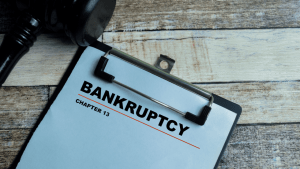
How to File Chapter 13 Bankruptcy
Learning how to file Chapter 13 bankruptcy can provide crucial debt relief while allowing you to keep your home and
Error: Contact form not found.
Lorem ipsum dolor sit amet, consectetur adipiscing elit. Ut elit tellus, luctus nec ullamcorper mattis, pulvinar dapibus leo.
Learning how to file Chapter 13 bankruptcy can provide crucial debt relief while allowing you to keep your home and assets. This reorganization bankruptcy creates a 3-5 year repayment plan that makes your debts manageable. You’ll discover the essential steps, required documents, and timeline for successfully navigating this legal process.
Chapter 13 bankruptcy, often called “wage earner’s plan,” helps individuals with regular income restructure their debts. Unlike Chapter 7, you don’t lose your property but instead follow a court-approved payment plan. Understanding how to file Chapter 13 bankruptcy properly ensures you maximize debt relief while protecting your assets.
The process of how to file Chapter 13 bankruptcy involves several critical steps that must be completed accurately:
Before proceeding with how to file Chapter 13 bankruptcy, you must meet specific eligibility requirements:
Your secured debts cannot exceed $1,395,875, and unsecured debts must stay below $465,275 (2025 limits). You need regular income sufficient to fund a repayment plan. Additionally, you cannot have had a bankruptcy discharge within the past four years for Chapter 7 or two years for Chapter 13. The Federal Trade Commission provides additional guidance on bankruptcy alternatives and debt management options.
Courts require comprehensive income verification including employment records, self-employment earnings, rental income, social security benefits, and any other regular income sources. Your income must be stable and sufficient to support both living expenses and proposed plan payments.
Once you understand how to file Chapter 13 bankruptcy, the court process follows a predictable timeline:
After filing, you’ll receive an automatic stay that immediately stops collection activities, foreclosures, and wage garnishments. Within 45 days, you must submit your proposed repayment plan to the trustee and creditors.
The Meeting of Creditors occurs 20-40 days after filing, where you’ll answer questions under oath about your finances. Creditors rarely attend, but you must bring photo identification and Social Security card. Your confirmation hearing typically happens 45 days later, where the judge approves or modifies your repayment plan.
Successfully completing your Chapter 13 plan requires careful budgeting and commitment. Most plans last 36-60 months, depending on your income level compared to your state’s median income.
Priority debts like taxes and child support must be paid in full through your plan. Secured debts can be modified, potentially reducing interest rates or extending payment terms. Unsecured debts often receive partial payment, with remaining balances discharged upon plan completion.
If you’re struggling with overwhelming debt but have regular income, Chapter 13 bankruptcy might provide the fresh start you need. The experienced bankruptcy attorneys at bankruptcyattorneys.net/ can evaluate your specific situation and determine if this option aligns with your financial goals. Contact our legal team today for a free consultation to ensure you complete the process correctly and maximize your debt relief benefits.
The initial filing process takes 2-4 weeks to prepare documents, but the entire case lasts 3-5 years including your repayment plan period.
Yes, Chapter 13 allows you to keep your home while catching up on missed mortgage payments through your repayment plan.
Student loans, recent taxes, child support, alimony, and debts from fraud typically cannot be discharged in Chapter 13 bankruptcy.
Court filing fees are $313, plus attorney fees typically ranging from $3,000-$5,000, often paid through your repayment plan.
While not legally required, Chapter 13’s complexity makes attorney representation highly recommended for successful completion.

Learning how to file Chapter 13 bankruptcy can provide crucial debt relief while allowing you to keep your home and
| Cookie | Duration | Description |
|---|---|---|
| cookielawinfo-checkbox-analytics | 11 months | This cookie is set by GDPR Cookie Consent plugin. The cookie is used to store the user consent for the cookies in the category "Analytics". |
| cookielawinfo-checkbox-functional | 11 months | The cookie is set by GDPR cookie consent to record the user consent for the cookies in the category "Functional". |
| cookielawinfo-checkbox-necessary | 11 months | This cookie is set by GDPR Cookie Consent plugin. The cookies is used to store the user consent for the cookies in the category "Necessary". |
| cookielawinfo-checkbox-others | 11 months | This cookie is set by GDPR Cookie Consent plugin. The cookie is used to store the user consent for the cookies in the category "Other. |
| cookielawinfo-checkbox-performance | 11 months | This cookie is set by GDPR Cookie Consent plugin. The cookie is used to store the user consent for the cookies in the category "Performance". |
| viewed_cookie_policy | 11 months | The cookie is set by the GDPR Cookie Consent plugin and is used to store whether or not user has consented to the use of cookies. It does not store any personal data. |